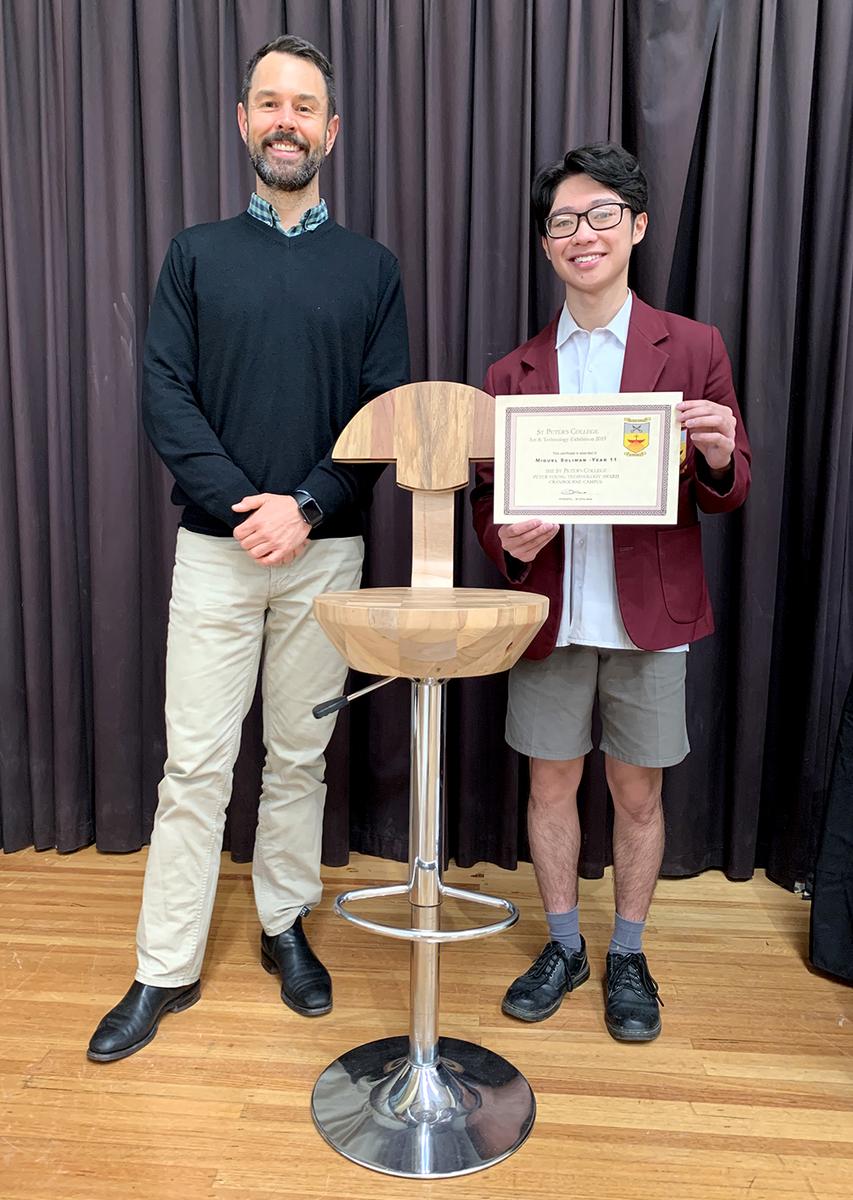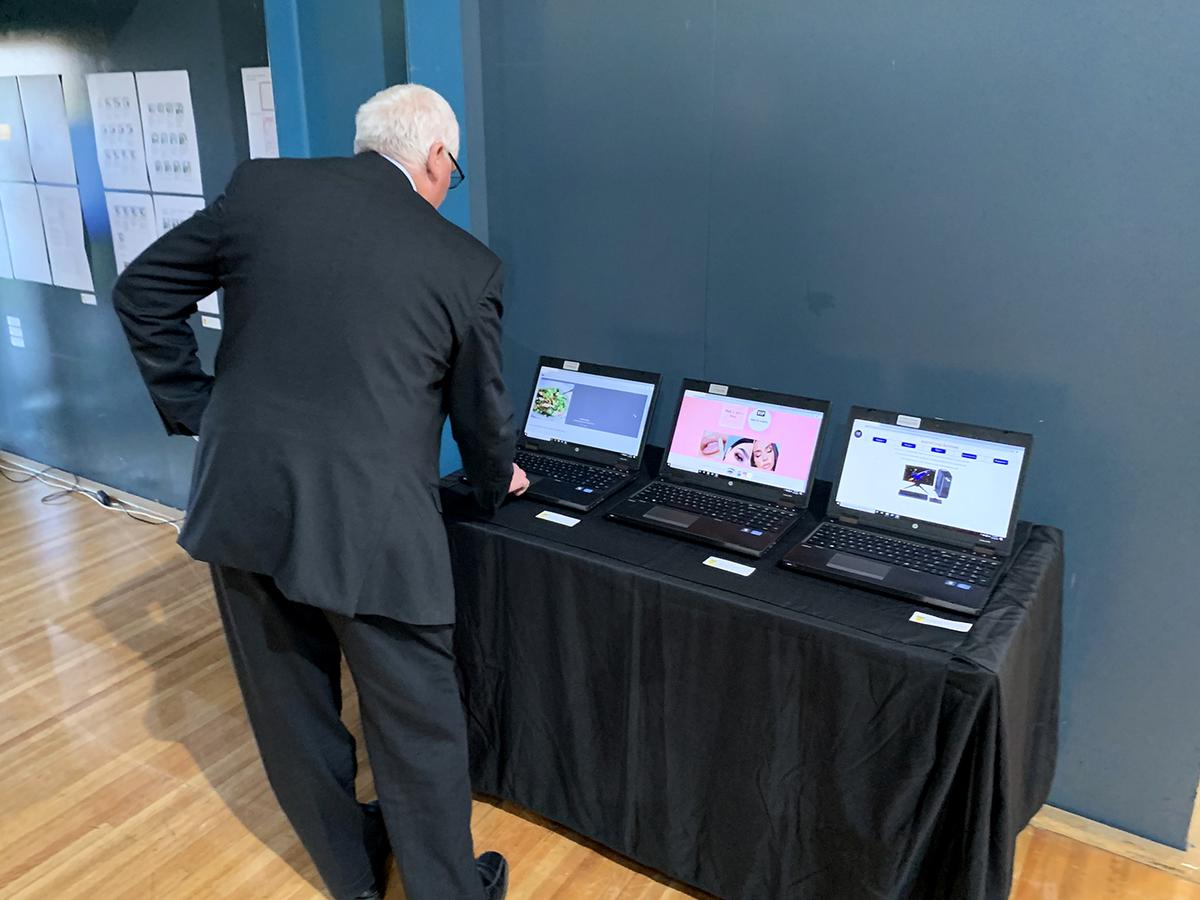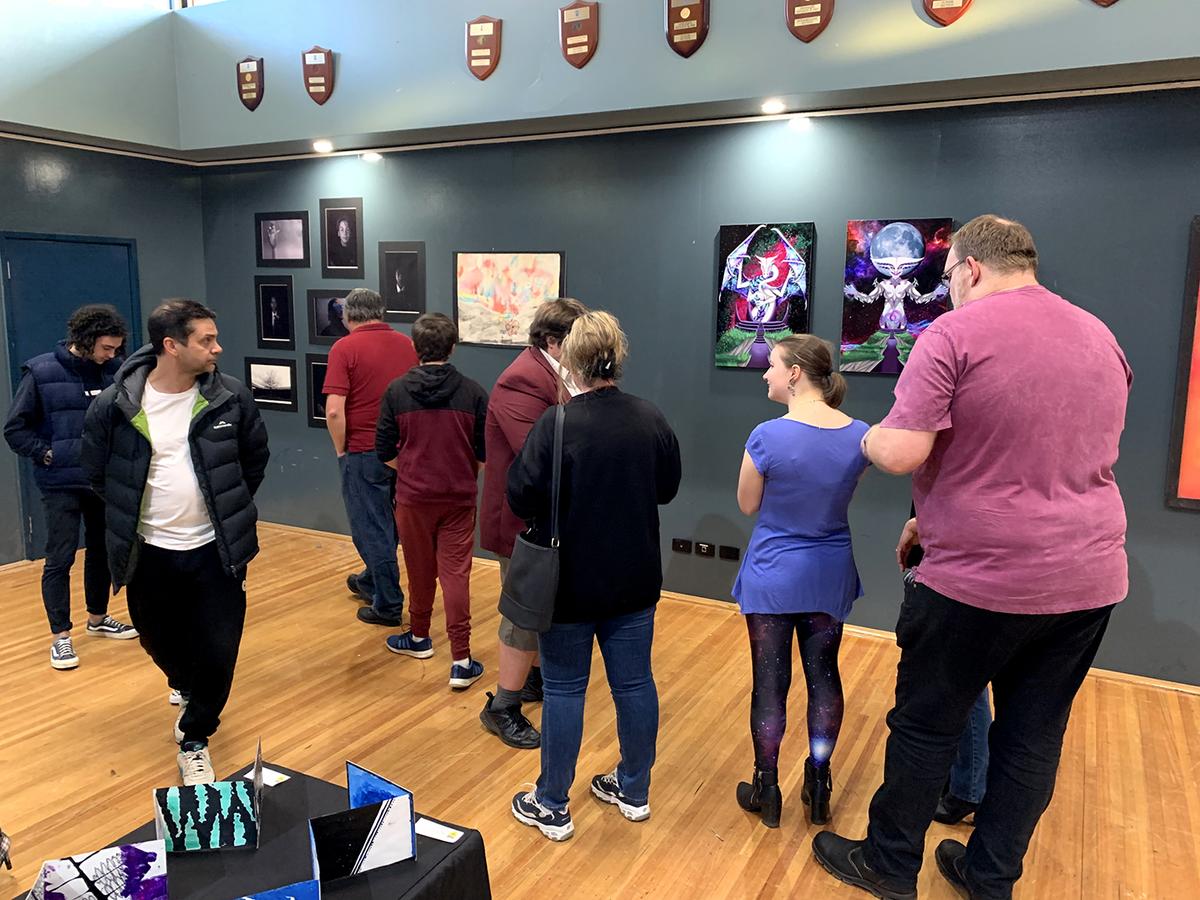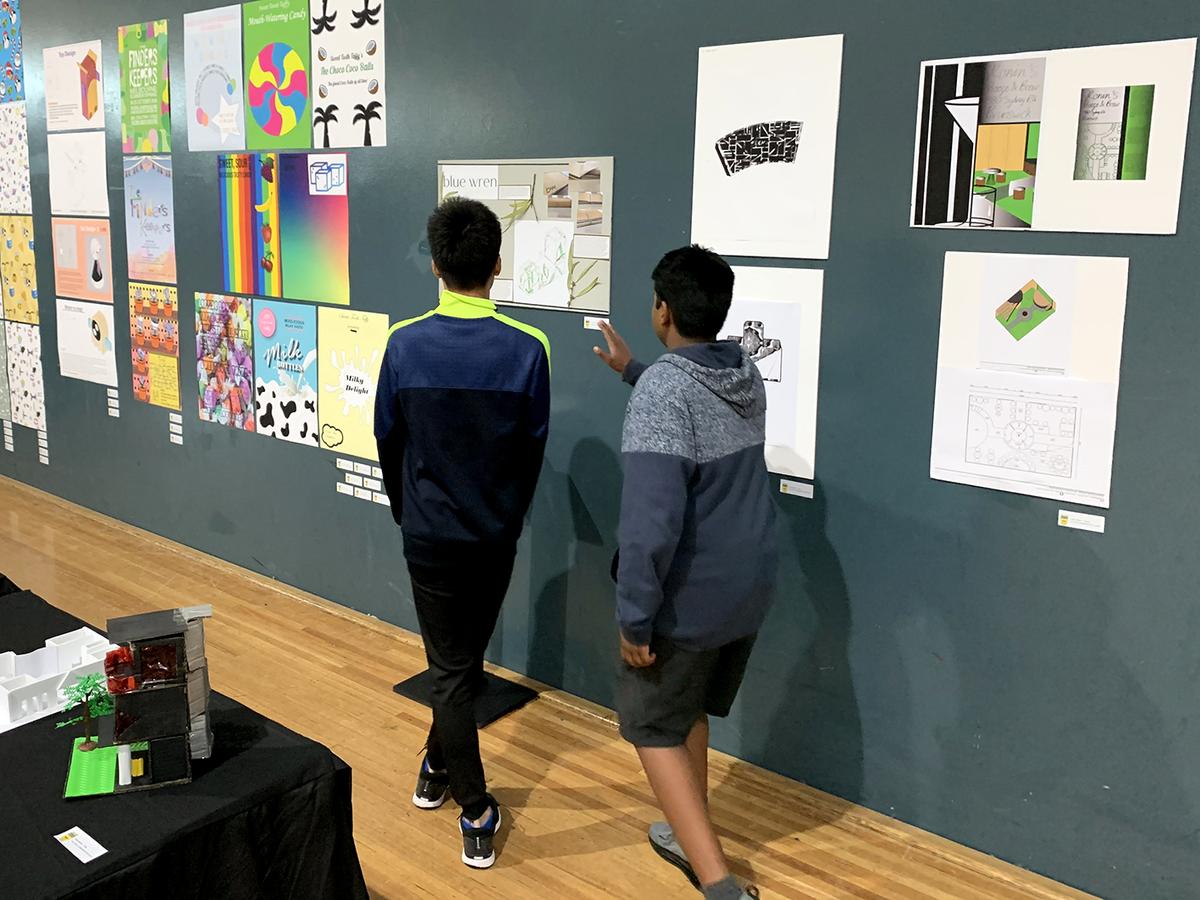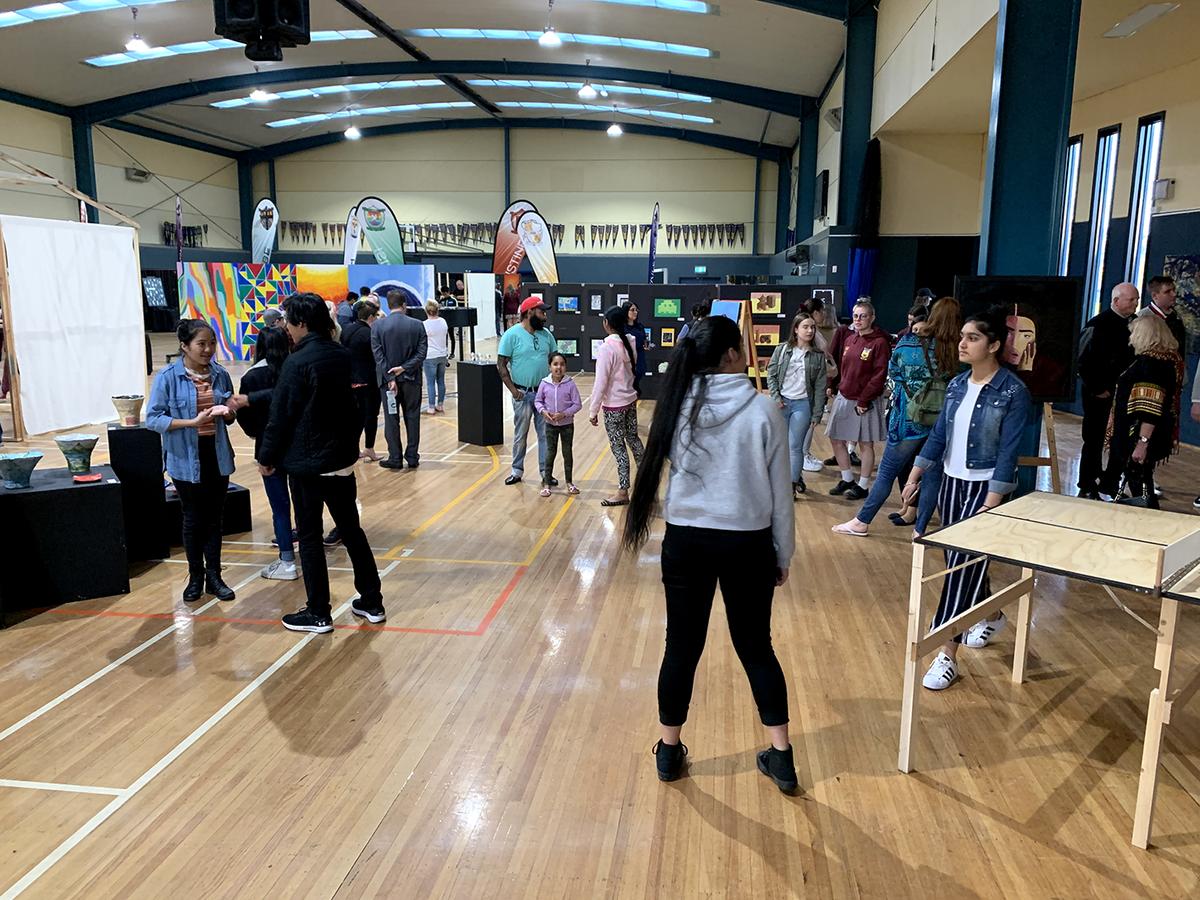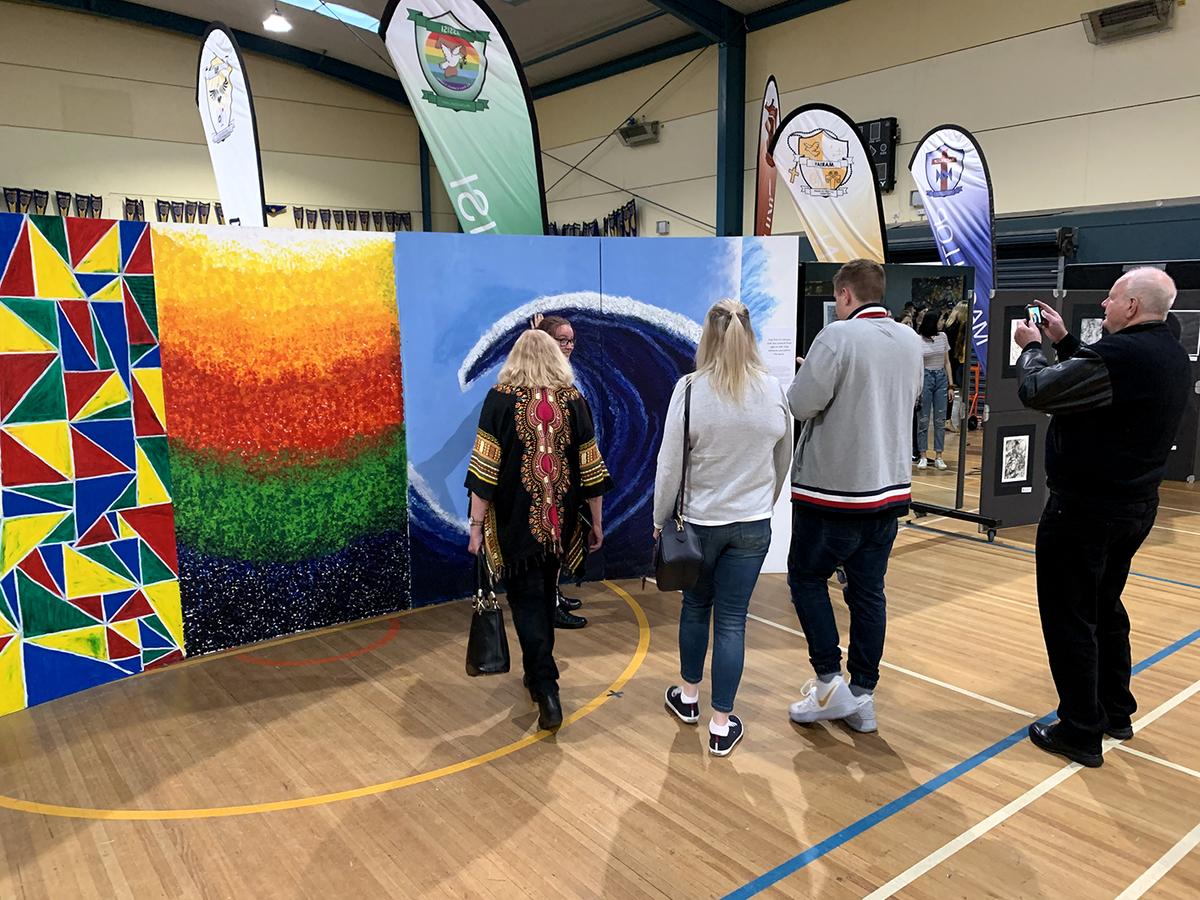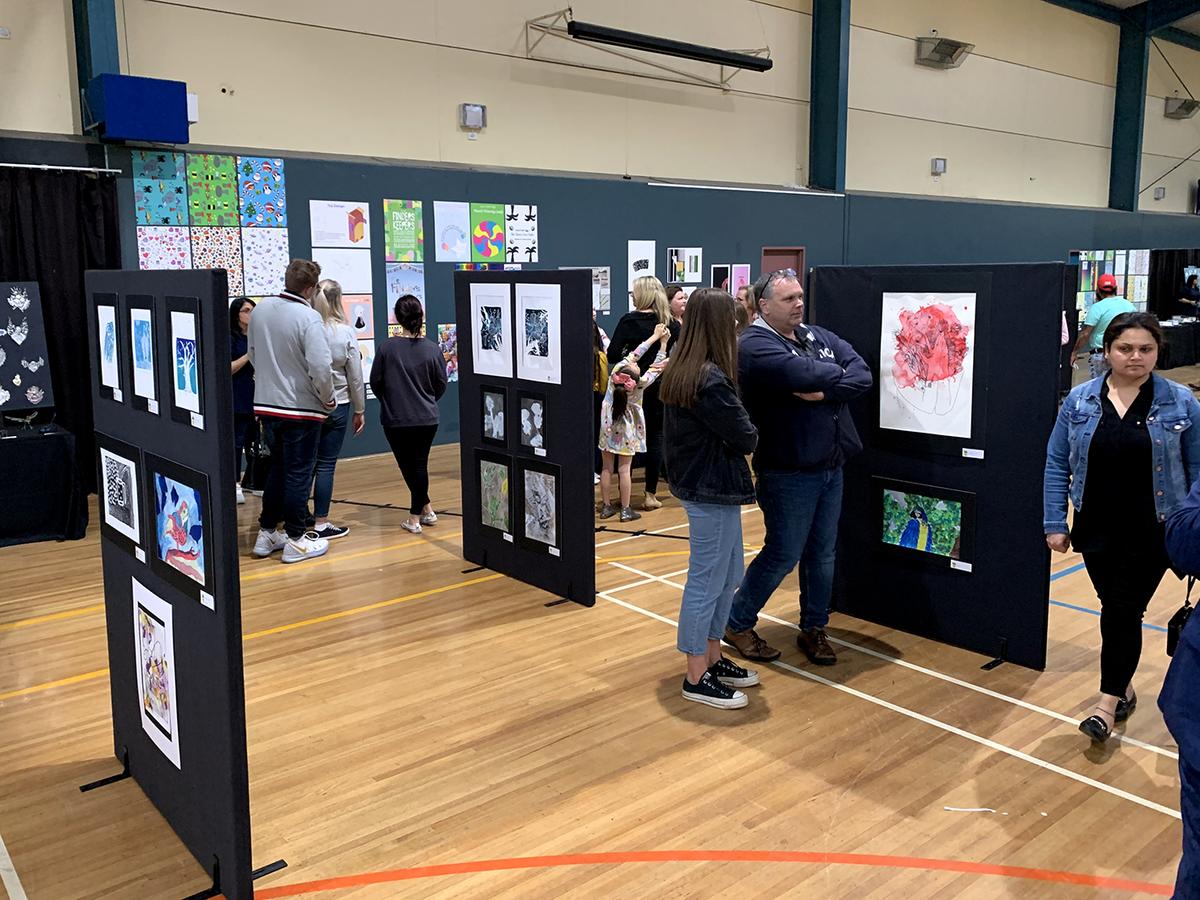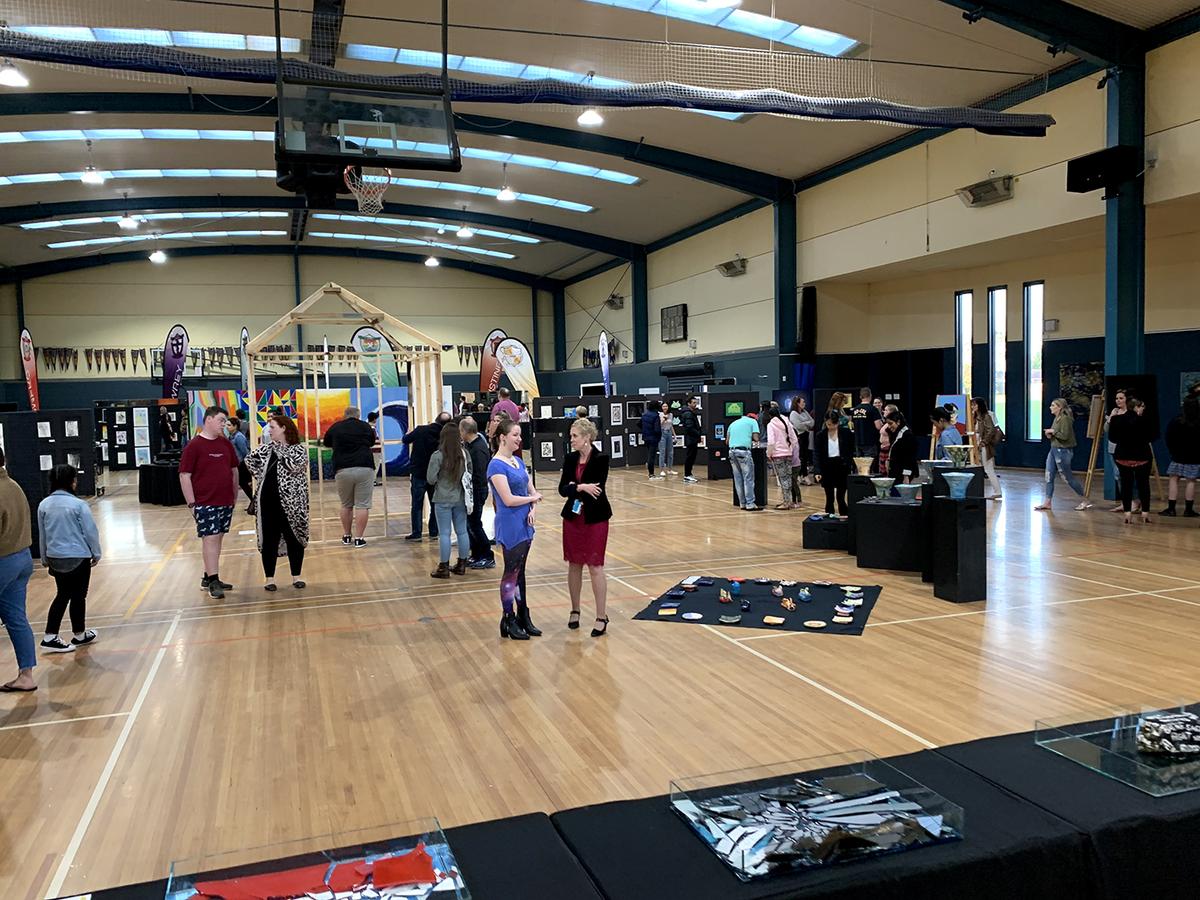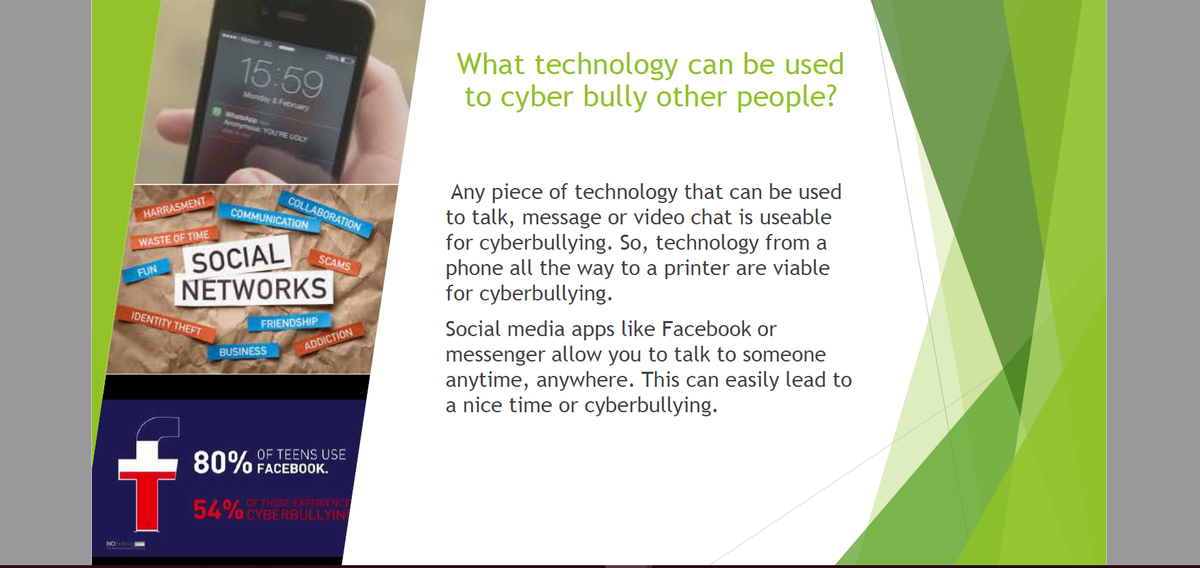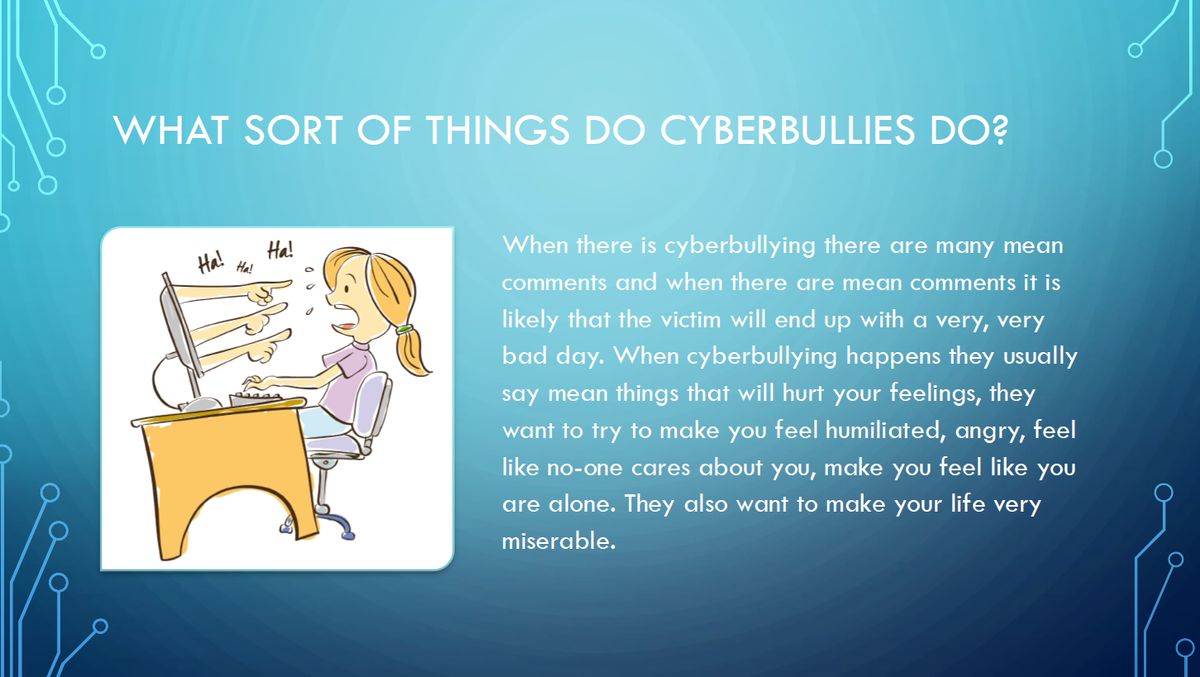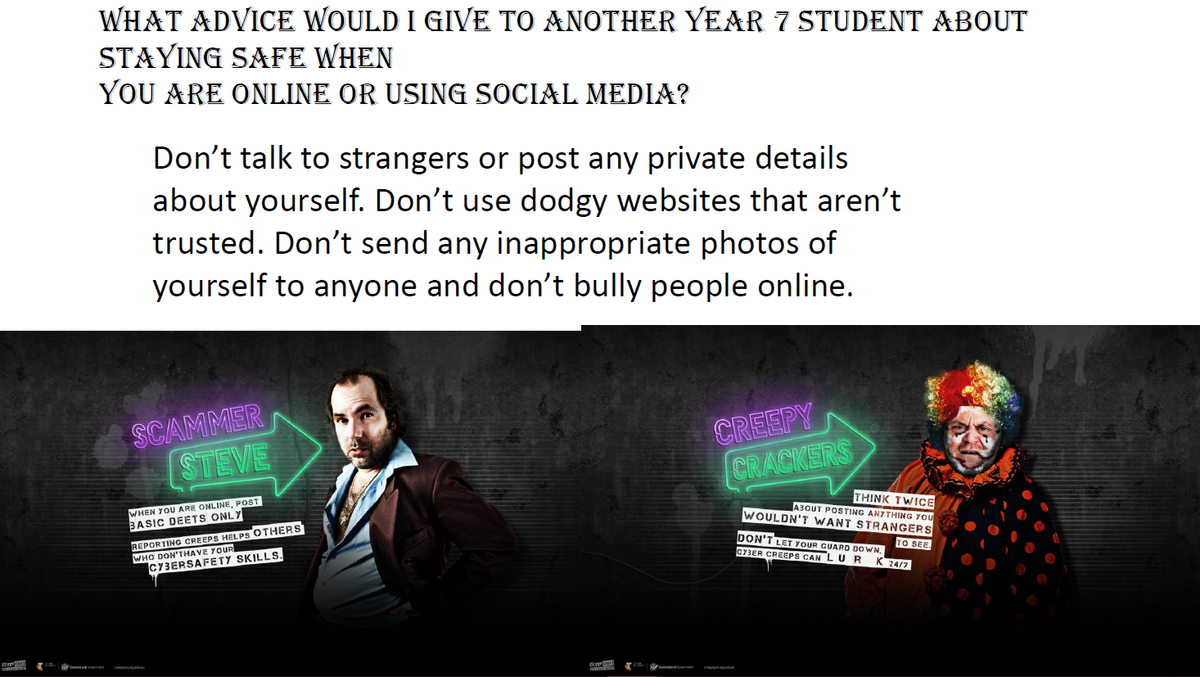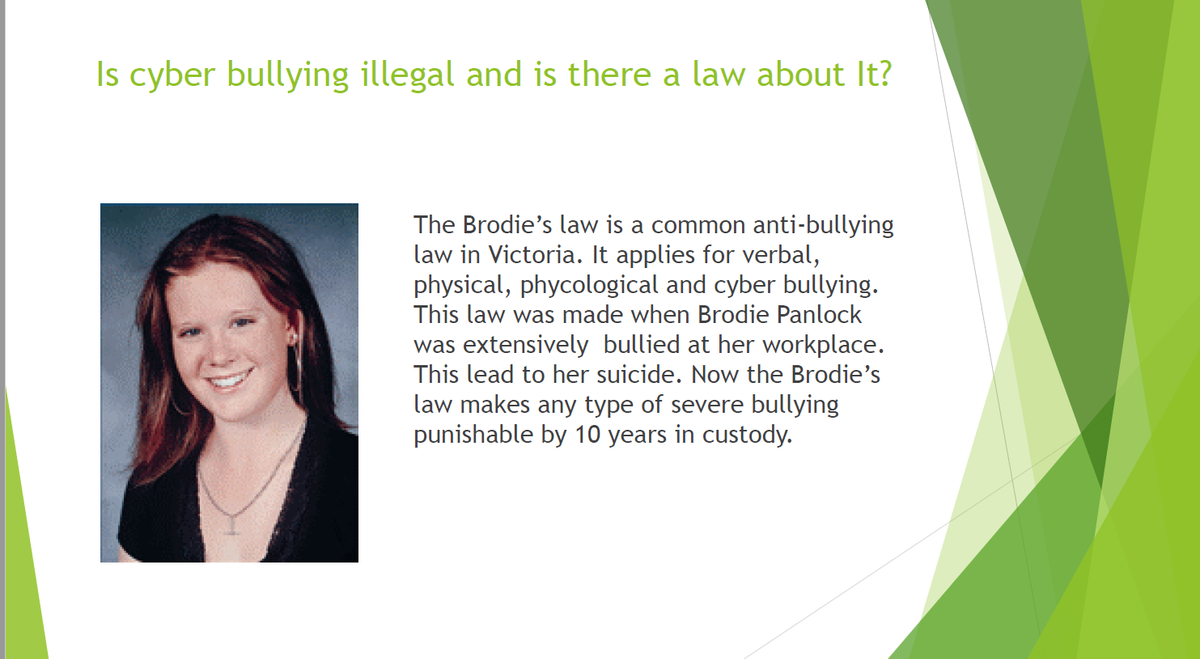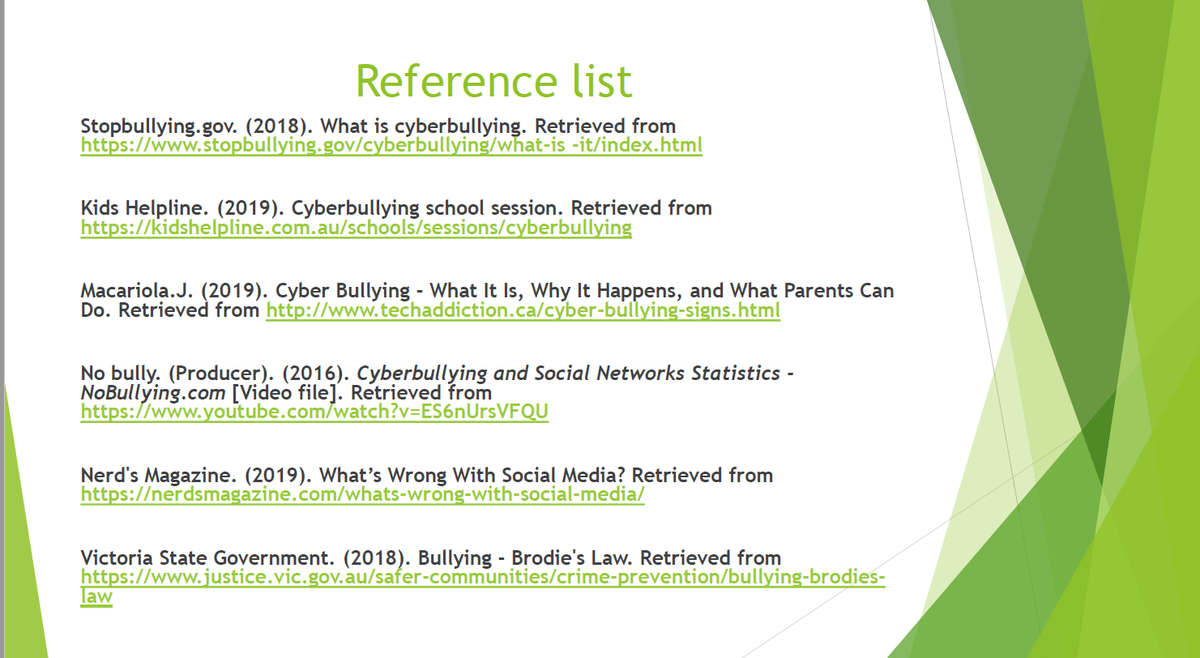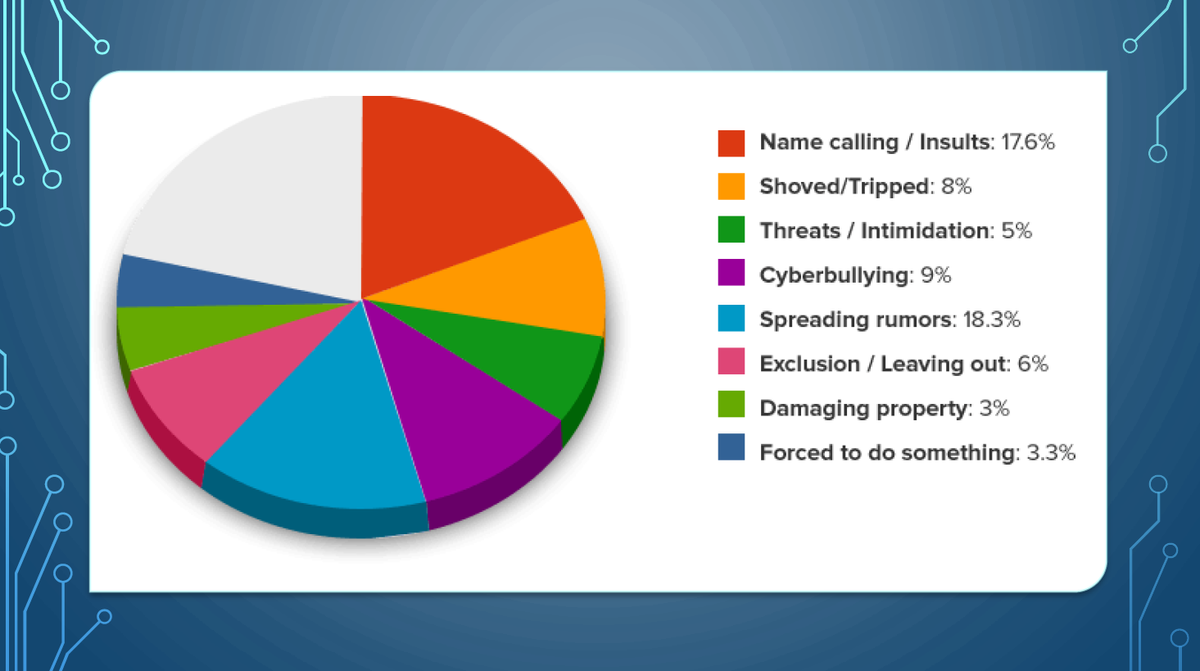Technology News
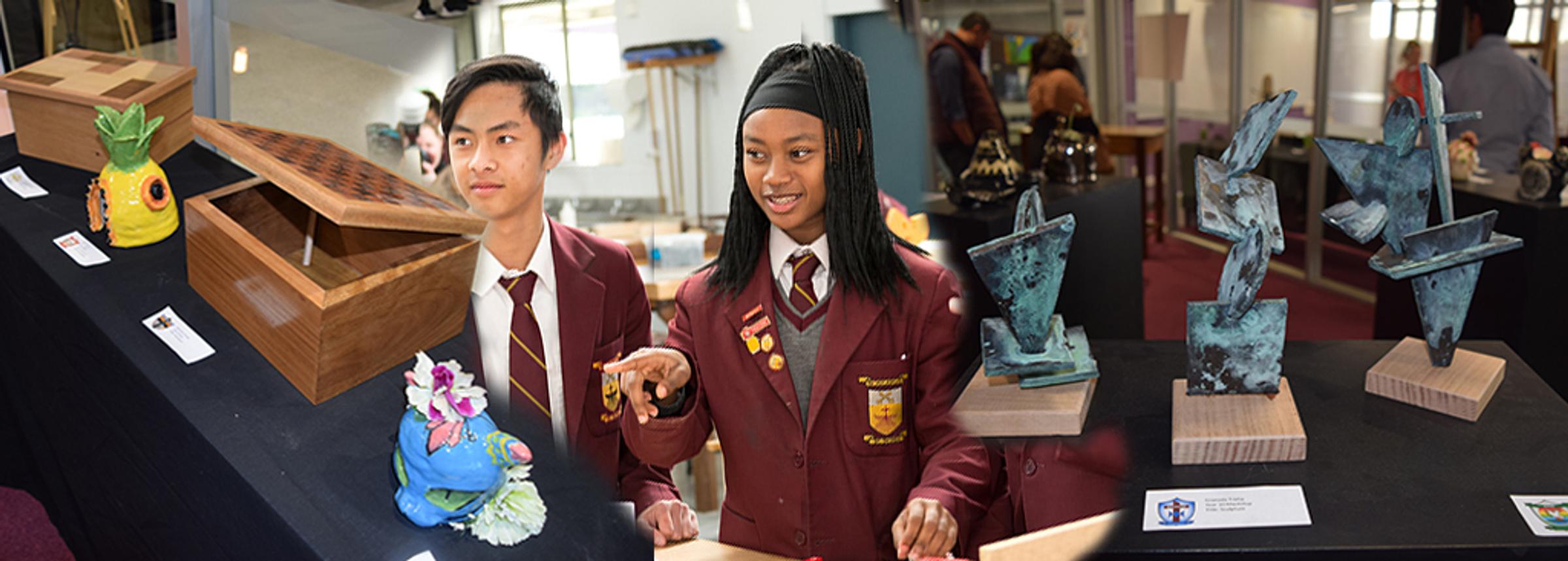
The Peter Young Award for Technology
Principal Chris Black opened the annual Cranbourne Campus Arts & Technology Exhibition on Monday, 14 October 2019 in the Multi-purpose Hall. The event is the culmination of work produced throughout the academic school year by Year 7 to Year 12 students who study in the field of Digital Technologies, Design & Technologies, Visual Arts, Visual Communication & Design and Media.
This year saw a diverse range of outstanding art, design and technology pieces that focused on a variety of conceptual ideas such as sustainability, political and social commentary, identity, displacement, housing, and religious identity.
The Peter Young Award for Technology is given to a Design & Technologies student who has achieved excellence in their chosen field. Peter Young was a founding teacher at St. Peter’s College in the Technology Faculty and the award was struck when he finished his teaching time here. The prize is in the form of a certificate and monetary funds that go towards materials to continue their studies. The Principal judges this award with the Technology Learning & Teaching Coach and with input from Design & Technologies teachers from work displayed at the St. Peter’s College Art & Technology Exhibition.
This year the recipient of the Peter Young Award for Technology from the Cranbourne Campus is Year 11 VCE Product Design and Technology student Miguel Soliman. VCE Product Design and Technology Unit 1 focuses on sustainable product development. This is achieved through analysis, modification and improvement of an existing product design to meet modern sustainability outcomes.
The design brief required students to design and produce a chair that had little to no impact on the environment. They focussed on using reclaimed and recycled timber from various sources ranging from hard rubbish finds to materials that industry might have otherwise thrown away.
Every part of the design process was carefully managed by the students to ensure that machining was kept to a minimum and that there was very little wastage of materials. The design folio, which includes research, development, prototyping, technical drawing, production planning, risk management and evaluation criteria was integral to the success of the final product.
Miguel Soliman successfully met all of the required criteria in the brief by carefully following the Product Design Process. His research was extensive and his drawings were detailed. He developed various prototypes and joined many pieces of timber together to form the seat. He used a pre-existing chair mechanism, made moulds for the bending of timber for the back support, worked on the timber lathe and carefully sanded and varnished his work to create his final piece. Congratulations Miguel!
Mr C. Robinson
Technology Teaching & Learning Coach - Cranbourne Campus
Digital Citizenship and Cybersafety
An important Technology unit for Year 7’s concerns Digital Citizenship, especially in terms of their ever-growing involvement with others on-line. The students reflect on their behaviours whilst on the internet, in terms of both their own actions and becoming astute assessors of their own cybersafety; carefully considering sites and people they interact with to avoid becoming ‘un-safe’ whilst on the internet.
The initial conversation centres around the students’ own personal information and how much of this they should or should not leave on-line, i.e. how much information should they leave in their ‘Digital Foot-print’?
The students progress to a discussion considering the behaviours of a good ‘Digital Citizen’ as discussed by the e-Safety Commissioner (2019) that commends:
“A digital citizen is a person with the skills and knowledge to effectively use digital technologies to participate in society, communicate with others and create and consume digital content.”
This website is highly recommended for students, parents and teachers and gives a wealth of both practical and important resources to access when considering the issues of Digital Citizenship and Cybersafety.
Personal safety is also discussed in terms of cyber-bullying; what it means to be bullied online and also coming to recognise behaviours that potentially constitute bullying others online.
The students were tasked with presenting evidence of their research and to design a
digital product to inform and promote cybersafety to their peers. Their product needed to include good visual design, their own reflections and a list of references in their Bibliography.
Below are some facts, figures, reflections and references from year 7 students:
Reference
Australian Government. ESafety Commissioner. (2019). Education resources. Retrieved from here.
Joyce Sendeckyj
Head of Library - Digital Technologies Teacher

